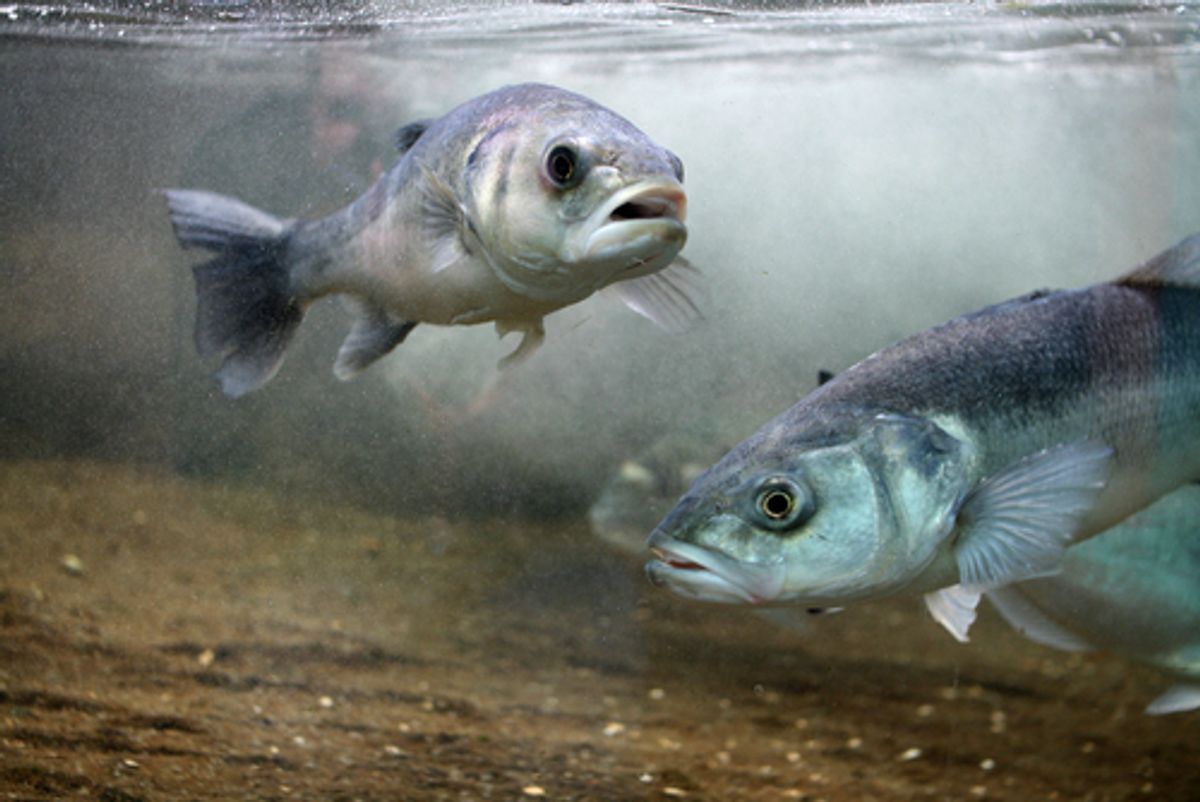European seabass (not to be confused with the Chilean variety) is the superstar of the seas, complete with loads of celebrity endorsements. Jamie Oliver recommends cooking it in a bag, with leeks, beans and heavy cream. Nigella Lawson fries hers with saffron, sherry and pinenuts. It's often served in fancy restaurants, because it's pricey -- and, as Quartz explains, because Europe's running out of other popular menu items like cod and haddock.
In 2012 alone, Europeans spent £30 million ($48 million) on the trendy catch. In so doing, unfortunately, they've begun to send it the way of those other overfished delicacies of menus past. Wild stocks of European seabass have reached a 20-year low, according to the International Council for the Exploration of the Seas, representing a 39 percent decline in population since 2009.
In the same article that explains why it may no longer be a good idea to eat it, The Guardian explains why people are so drawn to the fish:
Sea bass – a white fish that can be farmed, and has a pleasant, while not over-powering, flavour and a bone structure that responds well to filleting – has been beloved of chefs and home cooks as warnings have been issued over other species. The firm flesh can withstand strong flavours such as chilli while bringing out subtle fragrances in delicate herbs, and over more than two decades has become a restaurant menu and dinner party staple in the UK.
Scientists are hoping to restrict wild catches by at least a third to allow the populations to replenish themselves. As there are no current plans to do so, the onus will fall on consumers to resist its pleasant flavor and high-class appeal -- or else get used to eating cheaper farmed varieties.



Shares